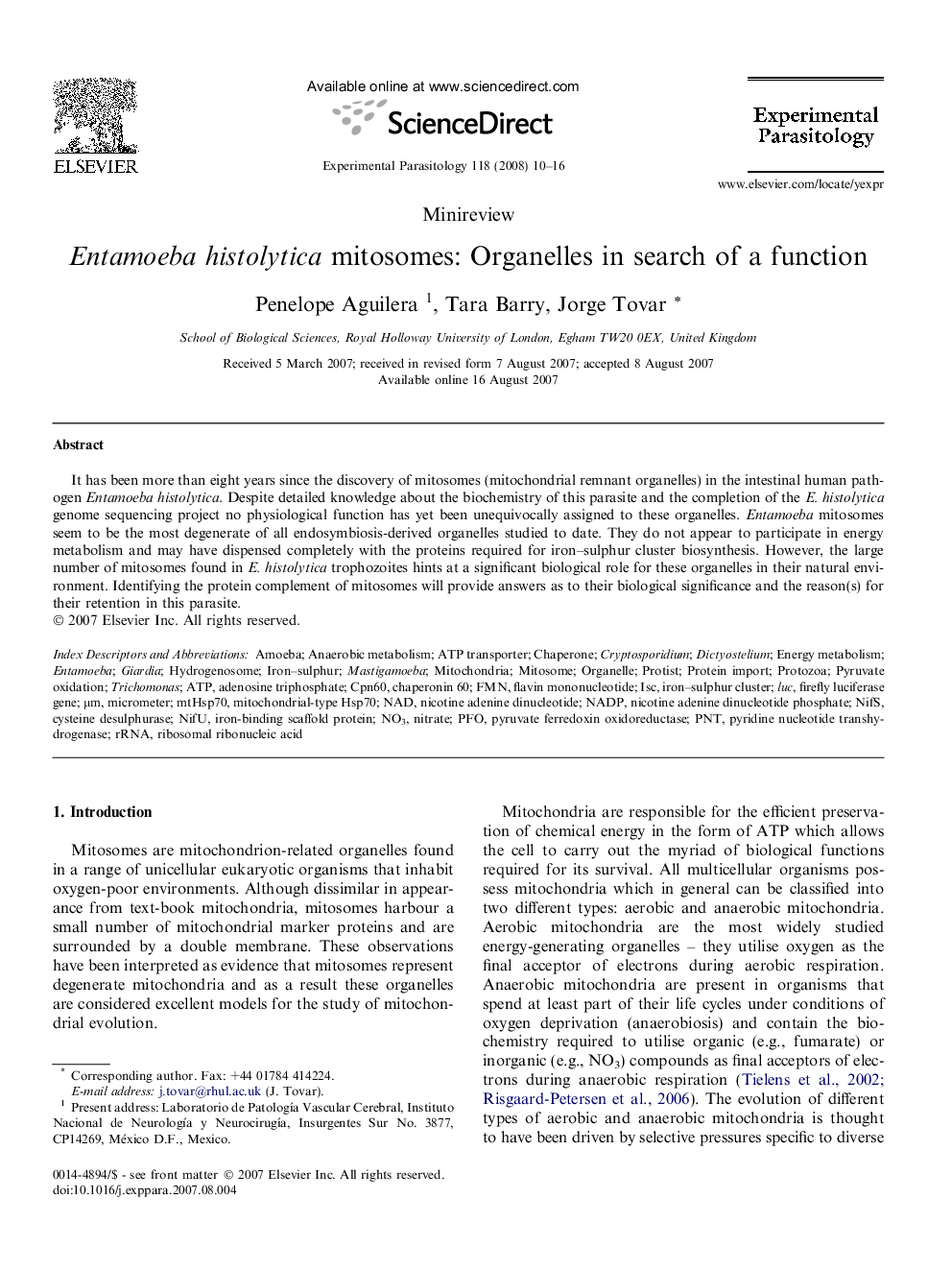| Article ID | Journal | Published Year | Pages | File Type |
|---|---|---|---|---|
| 4371547 | Experimental Parasitology | 2008 | 7 Pages |
Abstract
It has been more than eight years since the discovery of mitosomes (mitochondrial remnant organelles) in the intestinal human pathogen Entamoeba histolytica. Despite detailed knowledge about the biochemistry of this parasite and the completion of the E. histolytica genome sequencing project no physiological function has yet been unequivocally assigned to these organelles. Entamoeba mitosomes seem to be the most degenerate of all endosymbiosis-derived organelles studied to date. They do not appear to participate in energy metabolism and may have dispensed completely with the proteins required for iron-sulphur cluster biosynthesis. However, the large number of mitosomes found in E. histolytica trophozoites hints at a significant biological role for these organelles in their natural environment. Identifying the protein complement of mitosomes will provide answers as to their biological significance and the reason(s) for their retention in this parasite.
Keywords
mtHsp70TrichomonasorganelleEntamoebaPNTPFOCpn60ChaperoneDictyosteliumNO3ATP transporterμMrRNAIron–sulphurISCNADPFMNLUCfirefly luciferase geneAdenosine TriphosphateATPAmoebaribosomal ribonucleic acidPyruvate oxidationPyridine nucleotide transhydrogenaseNifSProtozoaIron–sulphur clusterflavin mononucleotideEnergy metabolismAnaerobic metabolismMitosomeMitochondriamicrometerNADNitratenicotine adenine dinucleotidenicotine adenine dinucleotide phosphateHydrogenosomeProtein importProtistPyruvate ferredoxin oxidoreductaseChaperonin 60GiardiaCryptosporidium
Related Topics
Life Sciences
Immunology and Microbiology
Parasitology
Authors
Penelope Aguilera, Tara Barry, Jorge Tovar,
